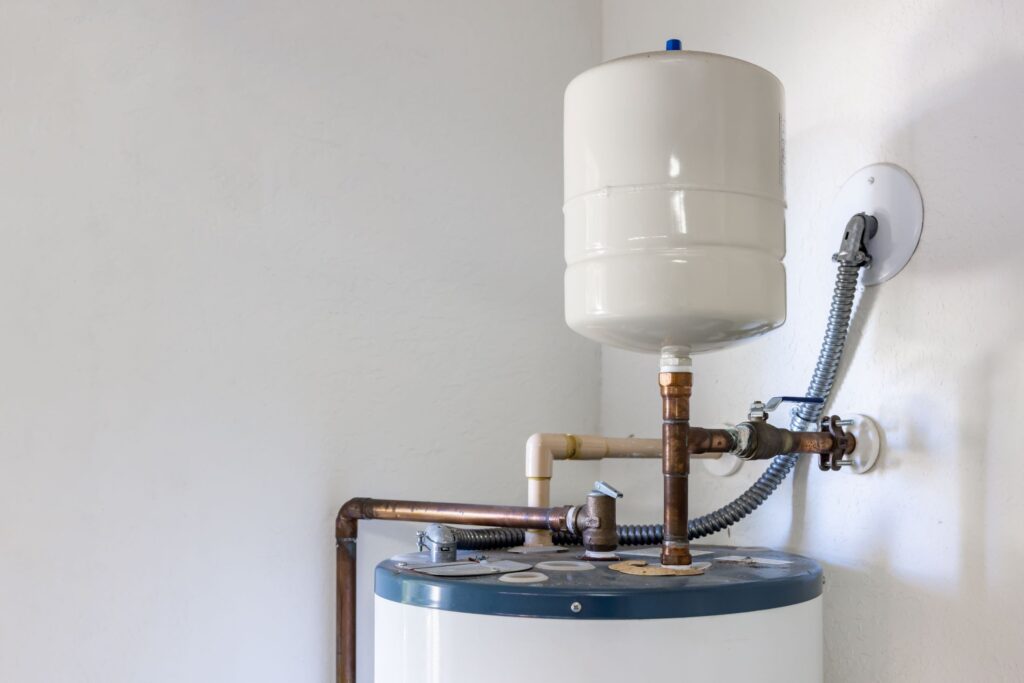Ways to Maintain Your Home's Hot Water System Functioning WellSteps to Successfully Care for Your Home's Hot Water System
Ways to Maintain Your Home's Hot Water System Functioning WellSteps to Successfully Care for Your Home's Hot Water System
Blog Article
Each person is bound to have their own perception about Tips For Maintaining Your Hot Water Heater.

Warm water is vital for everyday comfort, whether it's for a rejuvenating shower or washing recipes. To ensure your warm water system runs effectively and lasts longer, normal maintenance is crucial. This short article provides functional pointers and understandings on how to keep your home's hot water system to stay clear of interruptions and expensive repairs.
Intro
Keeping your home's hot water system could appear challenging, however with a couple of easy actions, you can ensure it runs smoothly for many years ahead. This guide covers every little thing from understanding your warm water system to do it yourself maintenance ideas and understanding when to call expert aid.
Importance of Preserving Your Warm Water System
Normal maintenance not only prolongs the life expectancy of your hot water system yet also guarantees it runs efficiently. Overlooking upkeep can cause lowered efficiency, higher power expenses, and also early failure of the system.
Indications Your Warm Water System Demands Maintenance
Understanding when your warm water system requires attention can avoid significant concerns. Keep an eye out for indications such as irregular water temperature level, odd noises from the heating system, or corroded water.
Comprehending Your Hot Water System
Prior to diving into maintenance jobs, it's practical to comprehend the fundamental elements of your hot water system. Usually, this includes the water heater itself, pipelines, anode poles, and temperature level controls.
Monthly Maintenance Tasks
Routine regular monthly checks can assist catch minor issues prior to they rise.
Purging the Hot Water Heater
Flushing your water heater gets rid of sediment buildup, boosting efficiency and lengthening its life.
Checking and Replacing Anode Rods
Anode poles avoid corrosion inside the tank. Evaluating and changing them when worn is important.
Examining and Readjusting Temperature Settings
Adjusting the temperature level setups guarantees optimal efficiency and security.
Do It Yourself Tips for Upkeep
You can carry out numerous maintenance tasks on your own to maintain your hot water system in leading problem.
Checking for Leaks
Consistently check pipes and connections for leaks, as these can bring about water damages and higher expenses.
Testing Stress Alleviation Valves
Checking the pressure safety valve ensures it operates appropriately and stops extreme pressure build-up.
Protecting Pipelines
Insulating warm water pipes lowers warm loss and can conserve energy.
When to Call a Professional
While DIY maintenance is beneficial, some concerns require expert knowledge.
Facility Issues Needing Professional Help
Instances include significant leaks, electric problems, or if your water heater is consistently underperforming.
Routine Specialist Upkeep Advantages
Expert maintenance can include complete evaluations, tune-ups, and making certain compliance with security criteria.
Final thought
Routine upkeep of your home's hot water system is important for performance, long life, and cost financial savings. By complying with these pointers and knowing when to seek expert aid, you can make certain a reputable supply of warm water without unanticipated disruptions.
Water Heater Maintenance: The Basics
Maintaining your water heater will ensure it operates efficiently and has a longer lifespan. Neglecting regular maintenance can lead to costly repairs and an even bigger chunk of your savings if you have to replace it sooner than necessary. But there’s good news: Most water heater maintenance tasks are relatively simple and easy for homeowners with basic DIY skills.
Flush the Water Heater
Over time, sediment and minerals can build up in the tank, reducing its efficiency and potentially causing damage. To flush the tank, turn off the power or gas supply, attach a hose to the drain valve near the bottom and open the valve to drain the water until it runs clear. Ideally, flush the tank annually.
Replace the Anode Rod
The anode rod is a sacrificial metal rod that helps prevent corrosion inside the tank. Inspect and replace it every three to five years or per the manufacturer's recommendation. To replace the anode rod, turn off the power or gas supply, drain a few gallons of water from the tank, unscrew the old rod and replace it with a new one. If the anode rod is significantly corroded or covered in calcium buildup, it's a sign the water heater may need to be replaced soon.
Tune-Up
A yearly tune-up can help identify potential issues and ensure your water heater operates at peak efficiency. This typically involves checking the thermostat, burner assembly (for gas heaters) and any other components specified by the manufacturer. During a tune-up, the technician may also clean the burner and adjust the pilot light (for gas heaters) or examine the heating elements (for electric heaters).
How to Maintain Your Water Heater
Insulate the tank. Insulating the tank can improve energy efficiency and reduce heat loss, saving you money on energy bills. You can purchase precut insulation blankets designed specifically for water heaters or use standard fiberglass insulation wrapped securely around the tank. Check the temperature. The recommended water temperature for most households is around 120 degrees Fahrenheit (49 degrees Celsius). Higher temperatures can increase energy costs and potentially cause scalding. Use a kitchen thermometer to check the temperature at the faucet nearest the water heater. Monitor water pressure. Excessive water pressure can strain the water heater and cause leaks or even tank failure. Install a pressure-reducing valve if necessary. The ideal water pressure range is between 60 and 70 PSI (pounds per square inch). Test the temperature and pressure (T&P) relief valve. The T&P relief valve is a safety feature that releases pressure if the tank gets too hot or the pressure builds up too high. Test it annually by lifting the lever and allowing a small amount of water to release. Replace the valve if it doesn't release water or reseal properly. Check for leaks. Regularly inspect the tank, pipes and fittings for leaks or corrosion. Deal with issues promptly to prevent further damage. Even a small leak can lead to significant water damage over time. Consider a tankless water heater. If your traditional tank-style water heater is nearing the end of its lifespan ( typically 10 years), consider replacing it with a tankless water heater. These units heat water on demand, reducing standby energy losses and potentially saving you money on your energy bills. Schedule professional maintenance. While homeowners can perform many water heater maintenance tasks, it's still a good idea to schedule professional maintenance every few years. A plumber or HVAC technician can thoroughly inspect the unit, identify potential issues and ensure it operates safely and efficiently. https://www.homeserve.com/en-us/blog/home-improvement/hot-water-heater-maintanence/

I stumbled upon that blog post about How to Maintain Your Water Heater & Prolong its Life while doing a lookup on the web. Do you know about somebody who is involved in the niche? Feel free to promote it. We truly appreciate reading our article about Tips For Maintaining Your Hot Water Heater.
Go Company Report this page